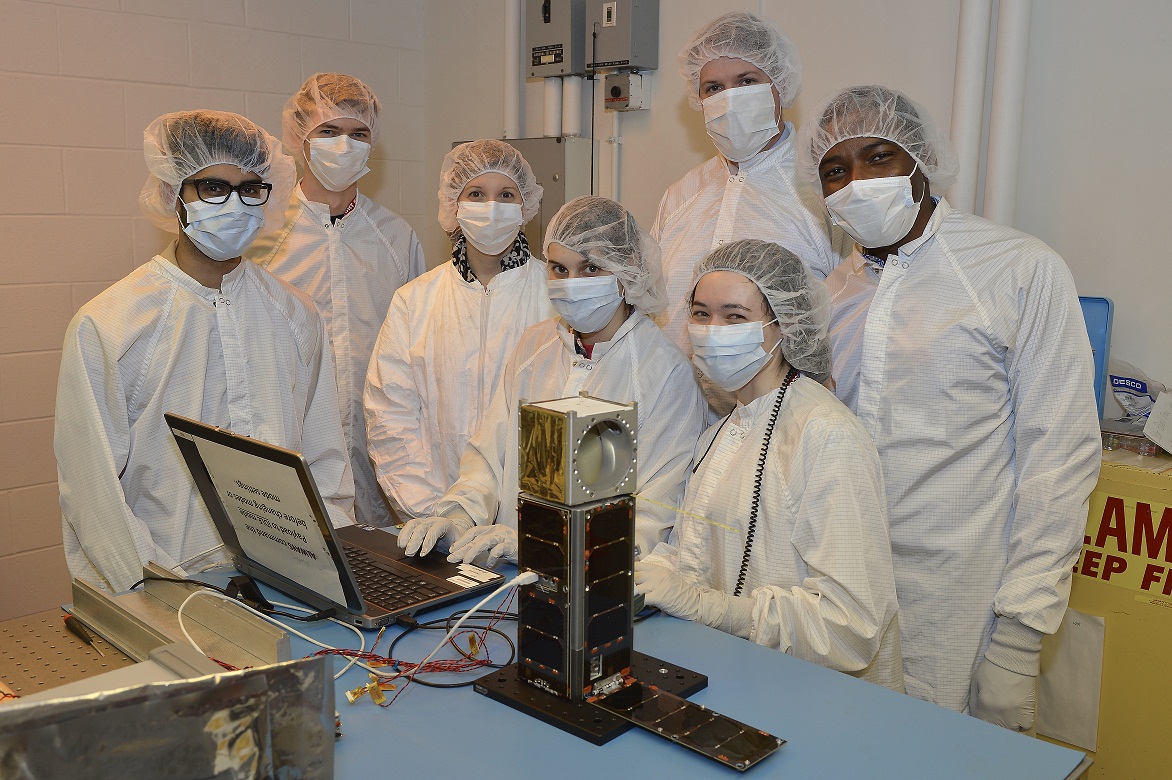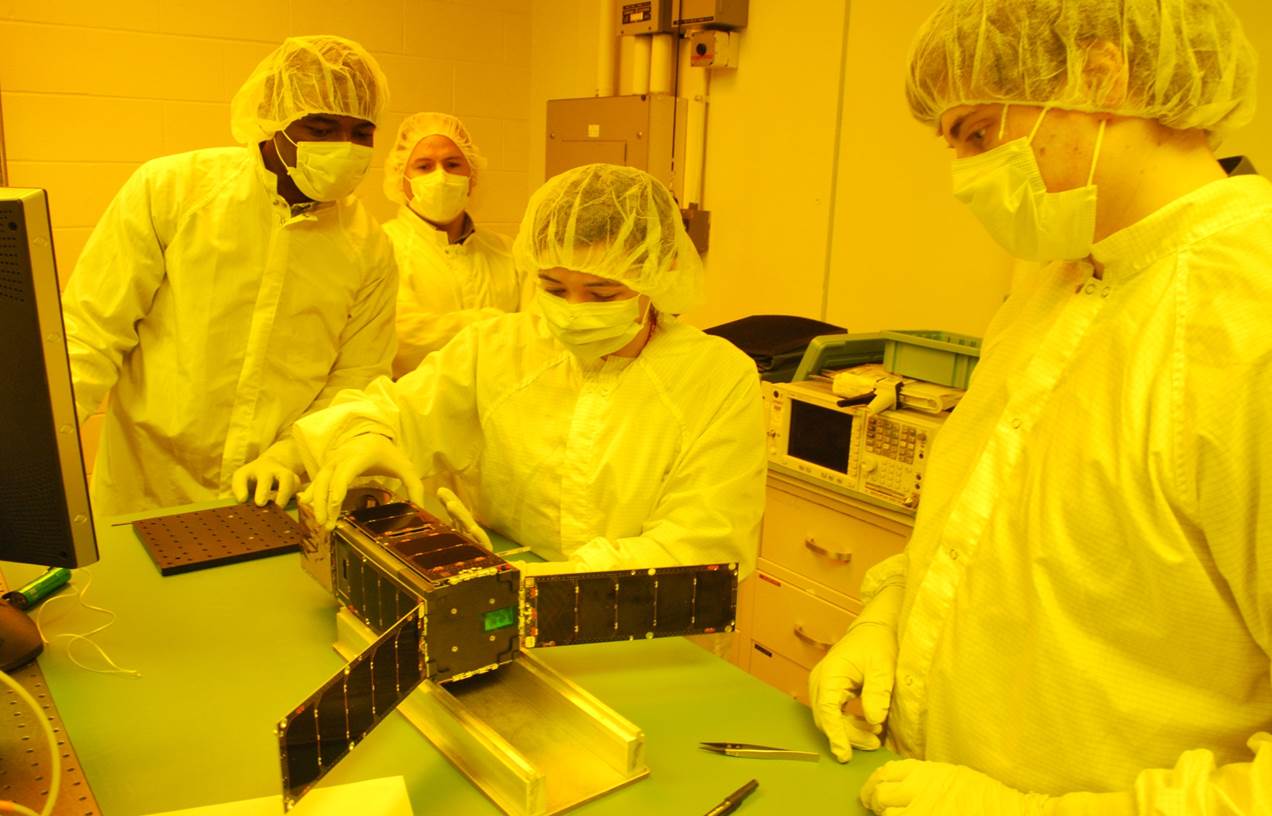Project MicroMAS
|
|
|
|
The MicroMAS project is the brainchild of Dr. William Blackwell, assistant leader of the Sensor Technology and System Applications Group and Principal investigator of the MicroMAS mission. Dr. Blackwell imagined a low-cost, mission-flexible, and rapidly deployable spaceborne sensor that will help mitigate lapses in radiometric data availability for environmental monitoring. The novel idea led to capstone courses at MIT’s Department of Aeronautics and Astronautics, where students designed a low-cost satellite bus to host a passive microwave radiometer. The MicroMAS research project came on the heels of those successful capstone courses, with the aim of refining the capstone course’s satellite design and building a satellite to meet environmental and radiometric requirements of a spaceborne sensor. MicroMAS comprises a complete 3U (30 cm long) cubesat atmospheric sounder, with a 1U payload and a 2U bus. The 1U radiometer payload module (developed in collaboration with the UMass-Amherst Department of Radio Astronomy) has passive microwave receivers operating near an atmospheric absorption line at 118.75 GHz, and the 2U spacecraft bus (developed in collaboration with MIT Space Systems Laboratory) is complete with attitude determination and control, avionics, power, and communications systems. The research team comprised of students and staff members of MIT Space Systems Laboratory and staff members from MIT Lincoln Laboratory’s Aerospace, Advanced Technology, and Engineering Divisions. The research project afforded students an invaluable hands-on learning experience working with subject-matter experts in microwave radiometry and satellite design. Kerri Cahoy, Boeing Assistant Professor of Aeronautics and Astronautics, led the MIT SSL team; with students handling key responsibilities for structural design, thermal design, system engineering, power, avionics and communications, and attitude determination and control. |
|
MIT Lincoln Laboratory was responsible for the radiometer payload, and supervised the integration and test of the MicroMAS Space Vehicle (spacecraft bus plus payload). The MicroMAS Space Vehicle testing, including thermal vacuum and vibration testing, were conducted at the MITLL’s Environmental Test Laboratory (ETL). Several Lincoln Laboratory staff members played vital roles in MicroMAS research project. Dr. Christopher Galbraith, member of the RF technology Group, led the MicroMAS radiometer receiver design, which applied recent technology advancements in highly integrated and ultra-compact microwave receivers. Dr. Vincent Leslie, member of the Sensor Technology and System Applications Group, led the overall radiometer architecture, including calibration, data fusion and geophysical product retrieval, and operational implementation. Dr. Idahosa Osaretin, member of the Sensor Technology and System Applications Group and the MicroMAS Program Manager, led the MIT Lincoln Laboratory team through the design, integration, and test phases of the program. The MicroMAS team completed successful integration and testing of the MicroMAS Space Vehicle in March 2014. MicroMAS is scheduled to launch in June 2014 as part of an International Space Station (ISS) resupply mission. |
|
|
|
 |






